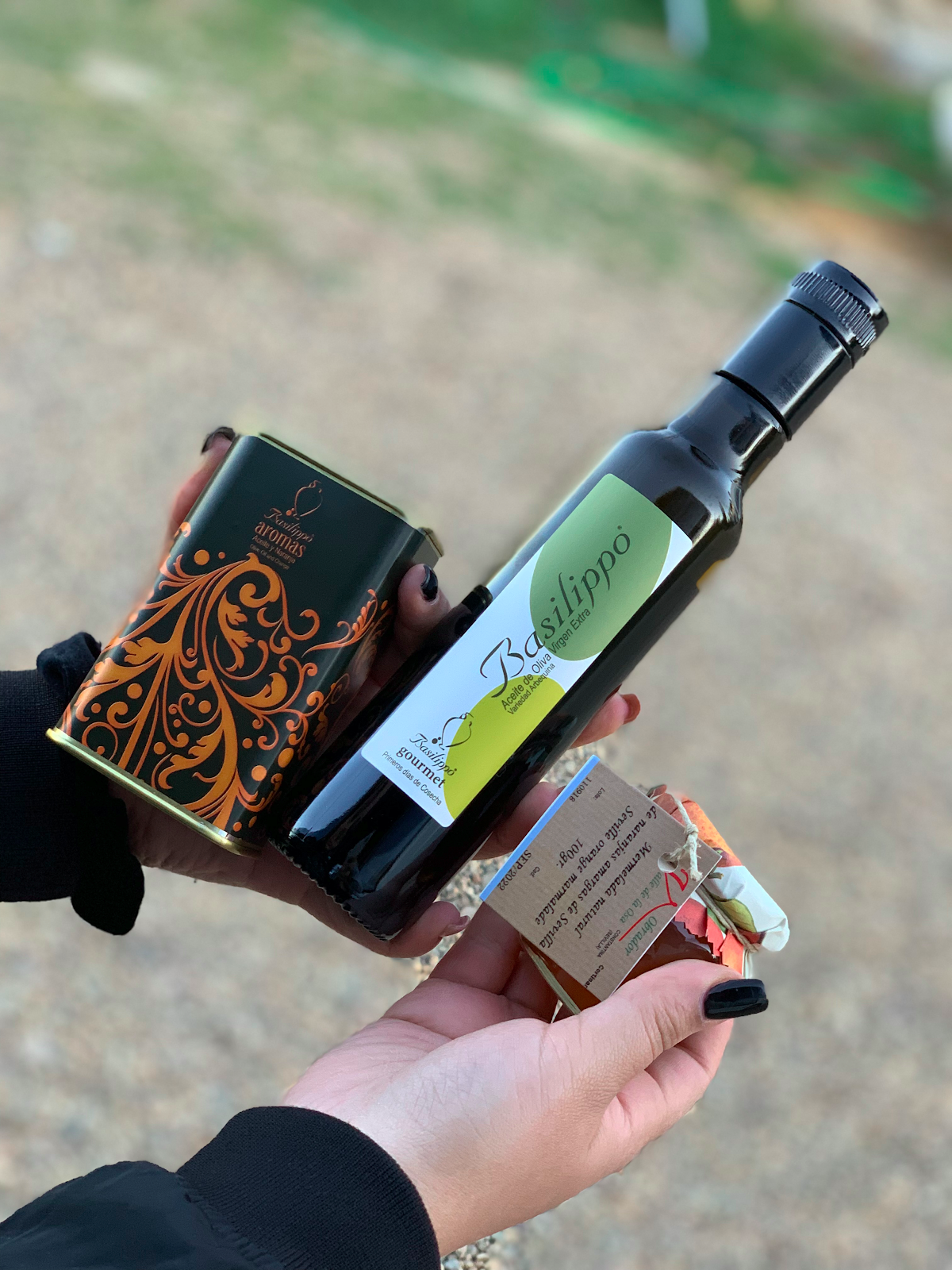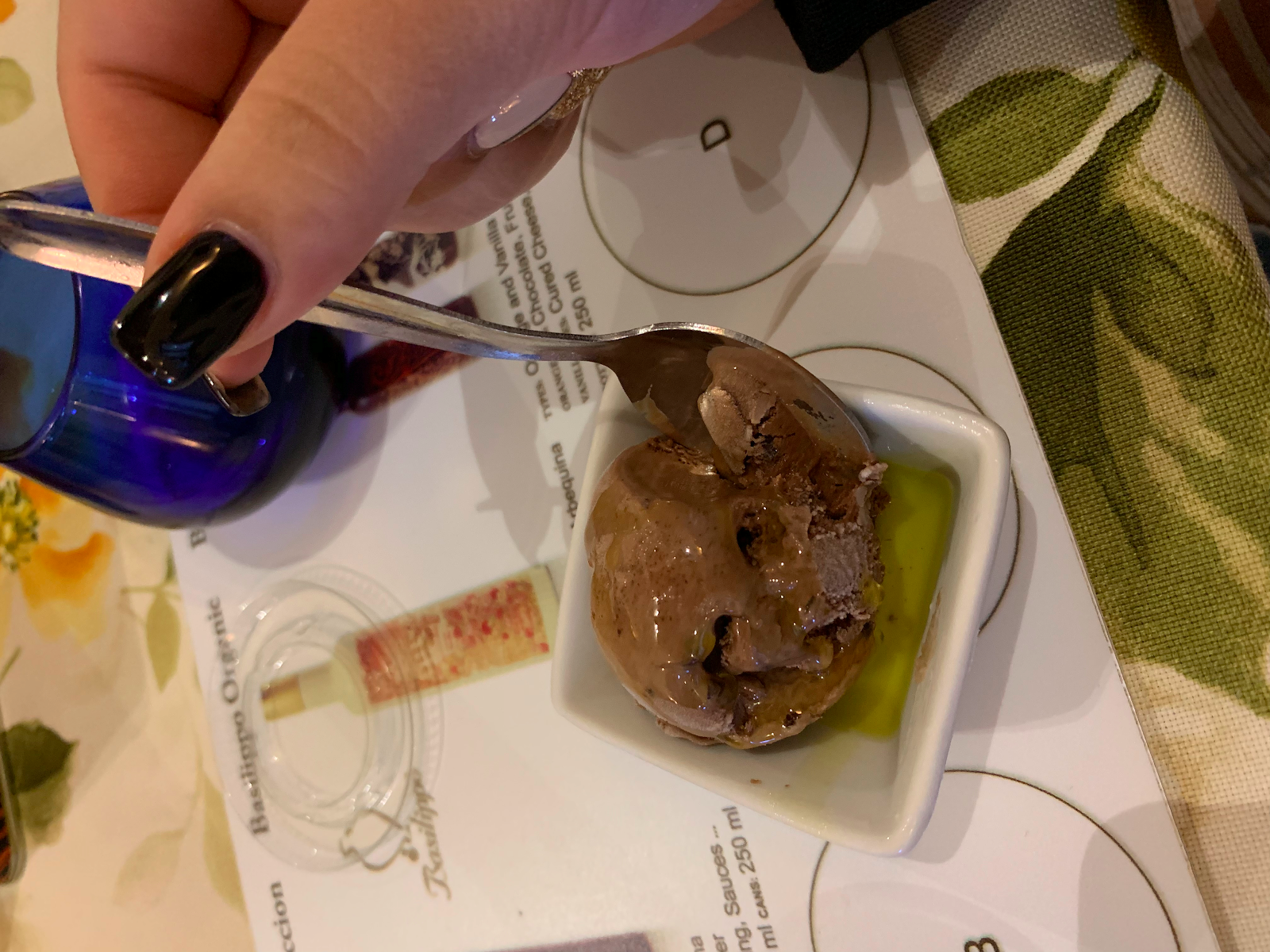By Ashley Lyons
 In Seville, our got to visit an olive farm that has been there for 400-500 years for an olive oil tasting and some education. The Greeks and the Phoenicians brought the olive trees to the Iberian Peninsula. Olive cultivation was expanded more by the Romans, who improved the techniques of oil production. Later, the North African people, known as Moors, continued to perfect the technique. (The importance of the Arabs is relevant because the Spanish word for oil comes from the Arabic language.) Now, after thousands of years of tradition, Spain is the major producer and exporter of olive oil in the world today.
In Seville, our got to visit an olive farm that has been there for 400-500 years for an olive oil tasting and some education. The Greeks and the Phoenicians brought the olive trees to the Iberian Peninsula. Olive cultivation was expanded more by the Romans, who improved the techniques of oil production. Later, the North African people, known as Moors, continued to perfect the technique. (The importance of the Arabs is relevant because the Spanish word for oil comes from the Arabic language.) Now, after thousands of years of tradition, Spain is the major producer and exporter of olive oil in the world today.

Going to an olive oil farm was such an amazing experience. Our guide, Isaac, was so knowledgeable and passionate it reflected on the tour. The Basilippo area has the owner’s home, land, and mill all in one property. There are over 6,000 olive trees and three different varieties there. You can see them lined up for miles. They produce the best extra virgin olive oil that is used for cooking, frying, and dressing. No oil is better than extra virgin olive oil. The olive is squeezed and nothing preserved is added to it. When it is squeezed perfectly you can smell the aromas of apple and banana peels, tomatoes, and fresh scents. The olives begin to grow in May and reach their maximum size in September. Olives are only produced once a year.
 Of course olive oil can be found in any grocery store, but Isaac gave us all the information we need to be an olive oil expert! Extra virgin olive oil means it’s perfect. When you’re in the store and see any information about the picking time of the olive on the bottle, that’s the one you should pick because you know it’s legit. Another sign of the better quality is when the bottle says it’s made in Spain. Virgin olive oil is the second best in quality. This means there is something slightly wrong with it with modest taste defects. The worse type of olive oil is lampante olive oil, which has serious unpleasant, sensorial defects. This happens when you wait too long to squeeze the olives, which will start to give a bad smell, or the olives are bruised and defected. This type of oil can’t be sent to the grocery stores to sell. It has to be sold to a factory that will try to clean it up. This oil is then labeled as refined lampante + virgin olive oil.
Of course olive oil can be found in any grocery store, but Isaac gave us all the information we need to be an olive oil expert! Extra virgin olive oil means it’s perfect. When you’re in the store and see any information about the picking time of the olive on the bottle, that’s the one you should pick because you know it’s legit. Another sign of the better quality is when the bottle says it’s made in Spain. Virgin olive oil is the second best in quality. This means there is something slightly wrong with it with modest taste defects. The worse type of olive oil is lampante olive oil, which has serious unpleasant, sensorial defects. This happens when you wait too long to squeeze the olives, which will start to give a bad smell, or the olives are bruised and defected. This type of oil can’t be sent to the grocery stores to sell. It has to be sold to a factory that will try to clean it up. This oil is then labeled as refined lampante + virgin olive oil.
 I think this was a highlight of my trip to Spain. I don’t think I would experience anything else like this tasting in the world. We tried all different types of oils, but my favorite was the Basilippo Aromas (orange and vanilla types). I tried something I’d never in my life expect to be so good. Chocolate ice cream with a pinch of sea salt that was topped with orange olive oil. What a combination! I had to buy it to bring home to do on my own. The other types of oils were Gourmet (used for salads, greens, and bread), Seleccion (used for seafood, dressing, and sauces), and Organic (used for pasta, game meat, and BBQ). I had a great time with my group learning everything you can about the olive oil process and taste!
I think this was a highlight of my trip to Spain. I don’t think I would experience anything else like this tasting in the world. We tried all different types of oils, but my favorite was the Basilippo Aromas (orange and vanilla types). I tried something I’d never in my life expect to be so good. Chocolate ice cream with a pinch of sea salt that was topped with orange olive oil. What a combination! I had to buy it to bring home to do on my own. The other types of oils were Gourmet (used for salads, greens, and bread), Seleccion (used for seafood, dressing, and sauces), and Organic (used for pasta, game meat, and BBQ). I had a great time with my group learning everything you can about the olive oil process and taste!
No comments:
Post a Comment